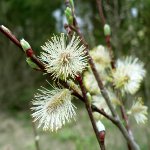Palm Sunday in Eastern Christianity Date in the current year: April 5, 2026
 Sunday before Easter is known as Palm Sunday. It is a movable feast celebrated by all Christian denominations that commemorates Jesus Christ’s triumphal entry into Jerusalem as described in the four canonical Gospels.
Sunday before Easter is known as Palm Sunday. It is a movable feast celebrated by all Christian denominations that commemorates Jesus Christ’s triumphal entry into Jerusalem as described in the four canonical Gospels.The triumphal entry of Jesus Christ into Jerusalem marks the beginning of his Passion, the short final period in Jesus’ life leading to his crucifixion. According to the Gospels, Jesus triumphantly entered Jerusalem riding a donkey, which was meant to symbolize his peaceful intentions (traditionally, a king arrived on a horse when he was bent on war and on a donkey when he wanted to point out that he was coming in peace). The people of Jerusalem rejoiced and laid their clothes and palm branches on the ground to welcome him.
In Eastern Christianity, Palm Sunday is also known as the Entry of the Lord into Jerusalem. Interestingly, the name “Palm Sunday” is rarely used because palm branches are unavailable in colder climates. Therefore, in some Eastern Christian countries, palm branches are substituted with branches of native trees, including pussy willow, box, and yew. Palm Sunday in these countries is often named after these substitute trees, as in Willow Sunday.
Palm Sunday belongs to the Twelve Great Feasts in the Eastern Orthodox Church, making it one of the most significant dates on the Orthodox liturgical calendar. To emphasize the feast’s importance, the hangings and vestments in churches are changed to green (in the Slavic tradition), gold (in the Greek tradition) or another festive color.
As we’ve already mentioned above, Eastern Christians rarely use palm fronds during Palm Sunday because of their unavailability. In Russia, Ukraine, and some other Slavic countries, it is customary to use pussy willow instead of palm. In warmer climates, believers may use olive branches. Regardless of the plant used, the branches are blessed either on Saturday night or on Sunday morning. The faithful take these branches together with church candles home after the All-Night Vigil or the Divine Liturgy, and keep them in the icon corner as a blessing.
In some Eastern Christian countries, there are specific customs associated with Palm Sunday. In Bulgaria, for example, the holiday is known as Flowers’ Day (Tsvetnitsa). It is considered the name day of people with flower related-names, such as Lilia, Margarita, Rosa, Tsvetana (from tsvete, “flower), Violeta, and others.
In Russia, there used to be a tradition of donkey walk processions, recreating Jesus’ triumphant entry into Jerusalem. The Patriarch of Moscow rode on a horse draped in white cloth, representing a donkey, while the Tsar of Russia led the procession of foot. The custom was terminated by Peter the Great in the 1720s. Such processions have been occasionally held in the 21st century, but the custom isn’t widespread.
In Indian Orthodox churches, there’s a tradition of scattering marigolds or other flowers about the sanctuary during the reading of the Gospel. This custom is meant to symbolize the honor shown to Jesus Christ upon his entry into Jerusalem, but its roots can be traced back to an old Hindu custom.
- Category
- Religious Holidays
- Tags
- Palm Sunday, Entry of the Lord into Jerusalem, Christian holidays, religious holidays, Twelve Great Feasts